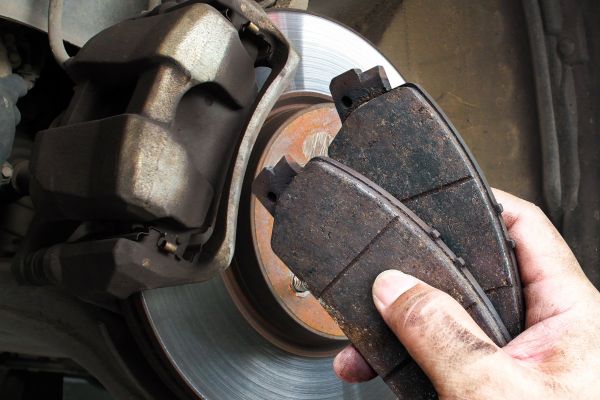Your vehicle’s braking system is one of its most vital safety components. Among all its elements, the brake pads play a critical role in ensuring your car stops effectively. Yet, many drivers overlook or delay brake pad maintenance until it’s too late. Understanding when to change brake pads is essential not just for your safety, but also for your vehicle’s performance and longevity. If you’re unsure whether your brake pads need replacing, this guide will help you recognize the signs and understand the importance of timely intervention.
Why Brake Pads Matter in Everyday Driving
Brake pads are designed to create the friction necessary to slow down or stop your vehicle when the brake pedal is pressed. Over time, this friction causes wear and tear. As the pads wear down, they lose effectiveness, which can significantly increase stopping distance. In severe cases, worn-out brake pads can lead to rotor damage, increased repair costs, or even complete brake failure.
Because the function of brake pads is both mechanical and safety-critical, knowing when to change brake pads becomes a priority for responsible car ownership. Modern vehicles are equipped with various warning indicators, but your own awareness can often be your best tool in identifying the right time for a brake pad replacement.
Recognizing the Early Warning Signs
While there’s no universal mileage or time frame that applies to every vehicle, there are several warning signs that indicate your brake pads might need to be changed. One of the most common indicators is a high-pitched squealing noise when you apply the brakes. This sound is often caused by a wear indicator embedded in the brake pad, designed to emit a warning noise once the pad has reached its minimum thickness.
Another sign is a grinding sound, which could mean the brake pad material has worn down completely, exposing the metal beneath. If left unaddressed, this metal-on-metal contact can damage your rotors, leading to more expensive repairs. Reduced braking performance, such as taking longer to stop or a soft or spongy brake pedal, is also a strong signal that something is wrong with your brake system.
Vibrations when braking can suggest uneven wear or warped rotors, which often occur when brake pads are neglected. Lastly, a brake warning light on your dashboard should never be ignored. Even if it’s just a sensor malfunction, it’s worth having it checked to rule out serious issues.
Driving Habits and Environmental Factors
Your individual driving style and the environment in which you drive can significantly affect when to change brake pads. For instance, if you frequently drive in heavy traffic or navigate hilly terrain, you may apply your brakes more often, leading to faster wear. Urban driving, with its constant stop-and-go conditions, typically wears down brake pads more quickly than highway driving.
Similarly, aggressive driving habits such as hard braking and high-speed stops put additional stress on your brake components. In contrast, gentle braking and maintaining a safe following distance can help extend the life of your brake pads. Driving conditions, such as wet or muddy environments, may also contribute to faster degradation due to debris and moisture interfering with the braking system.
Material and Manufacturer Guidelines
Brake pad material plays a crucial role in determining how often you should change them. Organic brake pads, made from materials like rubber and resin, tend to wear out faster than their semi-metallic or ceramic counterparts. While ceramic pads usually last longer and offer quieter performance, they may not be suitable for all types of vehicles or driving conditions.
Following your vehicle manufacturer’s recommendations is also key. Most manuals provide a maintenance schedule indicating mileage intervals for brake pad inspections and replacements. However, these are general guidelines, and actual wear can vary significantly. Regular inspections by a qualified technician can help you determine when to change brake pads based on the specific needs of your vehicle.
Consequences of Delaying Brake Pad Replacement
Ignoring the signs of worn-out brake pads can lead to a cascade of problems. Beyond reduced braking efficiency, you risk damaging other components of the braking system, such as the rotors and calipers. Repairing or replacing these parts is considerably more expensive than a routine brake pad replacement.
Moreover, driving with faulty brakes increases the risk of accidents, endangering you, your passengers, and others on the road. Delayed maintenance can also affect your vehicle’s resale value. A well-documented history of regular brake inspections and replacements signals to prospective buyers that the car has been properly maintained.
Best Practices for Monitoring Brake Health
To stay ahead of potential problems, it’s wise to have your brakes inspected at least every six months or during routine tire rotations. Mechanics can measure brake pad thickness, inspect for uneven wear, and check the condition of the rotors. Even if no immediate action is required, you’ll have peace of mind knowing your brakes are functioning properly.
For drivers who are more mechanically inclined, keeping an eye on brake pad thickness through the wheels or by removing the tires can offer early insights. If the pads appear thinner than a quarter of an inch, it’s likely time for a replacement. Monitoring brake fluid levels and checking for unusual sounds or sensations can also help catch issues early.
Investing in Quality Brake Maintenance
Not all brake pads are created equal, and opting for higher-quality components can yield better performance and longer lifespan. While premium pads may come with a higher upfront cost, they often provide more consistent braking power and durability, reducing the frequency of replacements. Working with a trusted mechanic who uses reputable parts ensures the job is done right and helps avoid the risks associated with substandard materials.
Whether you choose to have your brake pads replaced at a dealership, independent shop, or do it yourself, it’s crucial to follow proper installation procedures. Poorly installed pads can cause uneven wear or braking inefficiencies, defeating the purpose of the replacement.
Final Thoughts on When to Change Brake Pads
Knowing when to change brake pads is not just a matter of following a maintenance schedule—it’s about listening to your vehicle and understanding how various factors influence brake wear. From the sounds your car makes to the way it handles during braking, every signal is worth paying attention to.
Taking a proactive approach to brake maintenance not only protects your safety but also preserves your vehicle’s value and reduces long-term repair costs. By staying alert to the signs, considering your driving habits, and investing in quality service, you can ensure that your brakes remain reliable every time you hit the road. In the end, there’s no substitute for the peace of mind that comes with knowing your car will stop exactly when you need it to.







